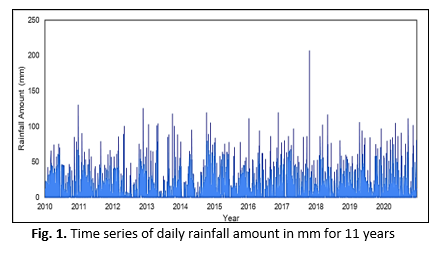Analysing Hydrological Extremes with Neural Network Algorithm and Support Vector Machine
DOI:
https://doi.org/10.37934/araset.61.2.112Keywords:
Artificial neural network, support vector machine, extreme value, hydrology, rainfall forecastingAbstract
Many areas in Malaysia that have never experienced flooding have been affected by the floods over the past few years. As a result of these events, water levels can change abruptly, resulting in extreme hydrological data values. This study investigated the characteristics of daily rainfall amounts at the Petaling Jaya station using two statistical tests, the Mann-Kendall test and Anderson-Darling test. After that, two machine learning models, namely Artificial Neural Networks and Support Vector Machines, were tested in order to predict and analyze the hydrological data. These investigations assessed the impact of multiple hidden nodes on rainfall amounts in ANN. In addition, they assessed performance accuracy based on the use of different kernels in SVM. The results of four performance metrics were examined, including Root Mean Square Error (RMSE), Mean Absolute Error (MAE), Mean Absolute Percentage Error (MAPE), and coefficient of correlation (R) to demonstrate that ANNs are more accurate than SVMs with respect to prediction accuracy. In addition to stable prediction, ANN is able to capture extreme events more effectively than SVM.




























